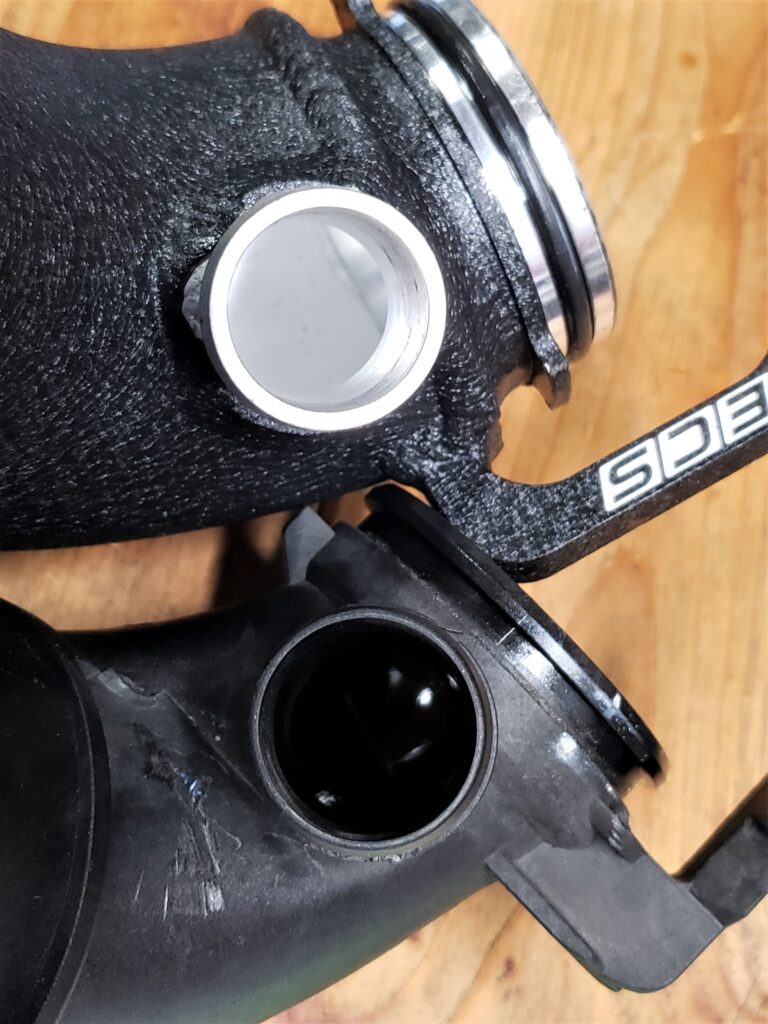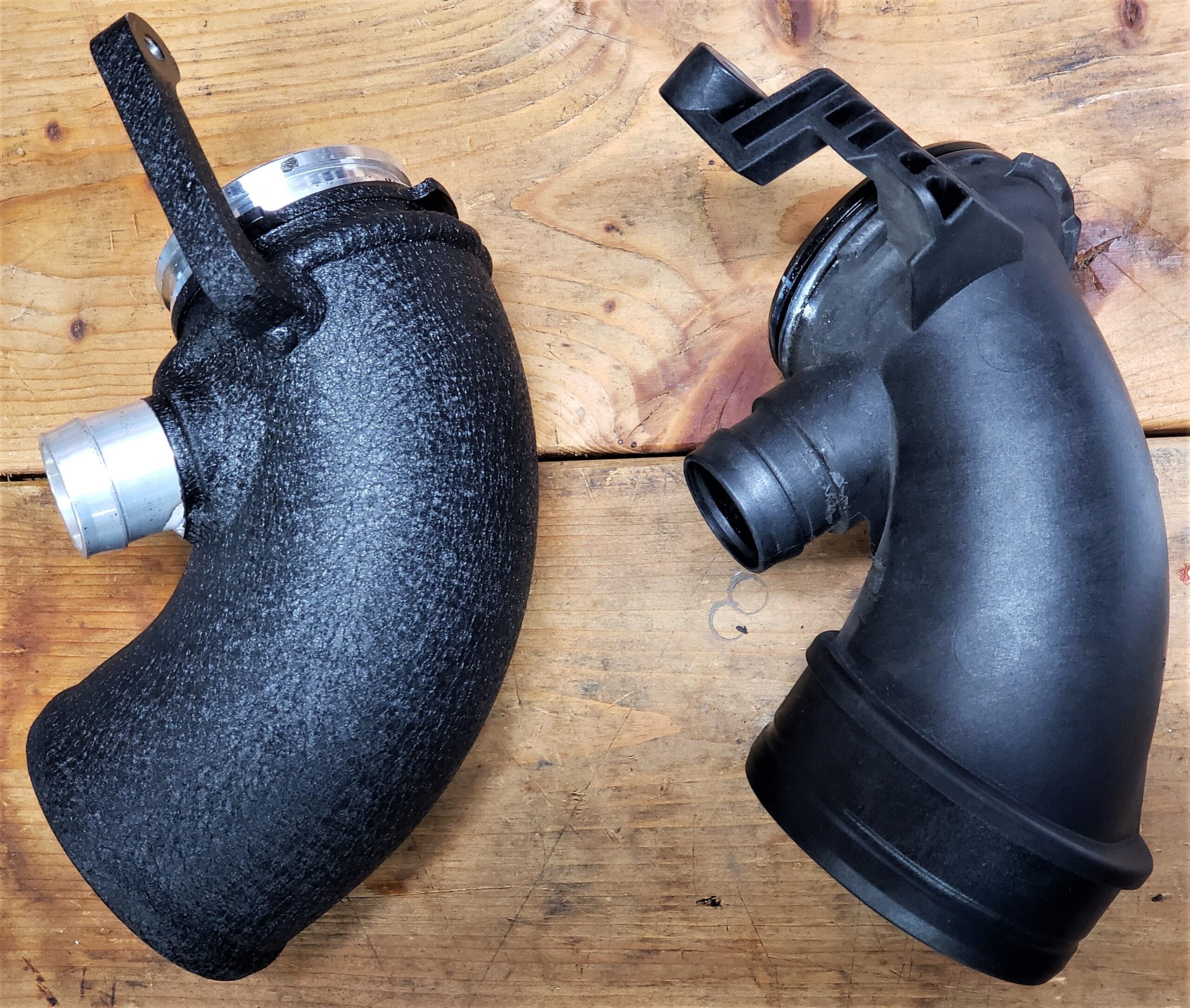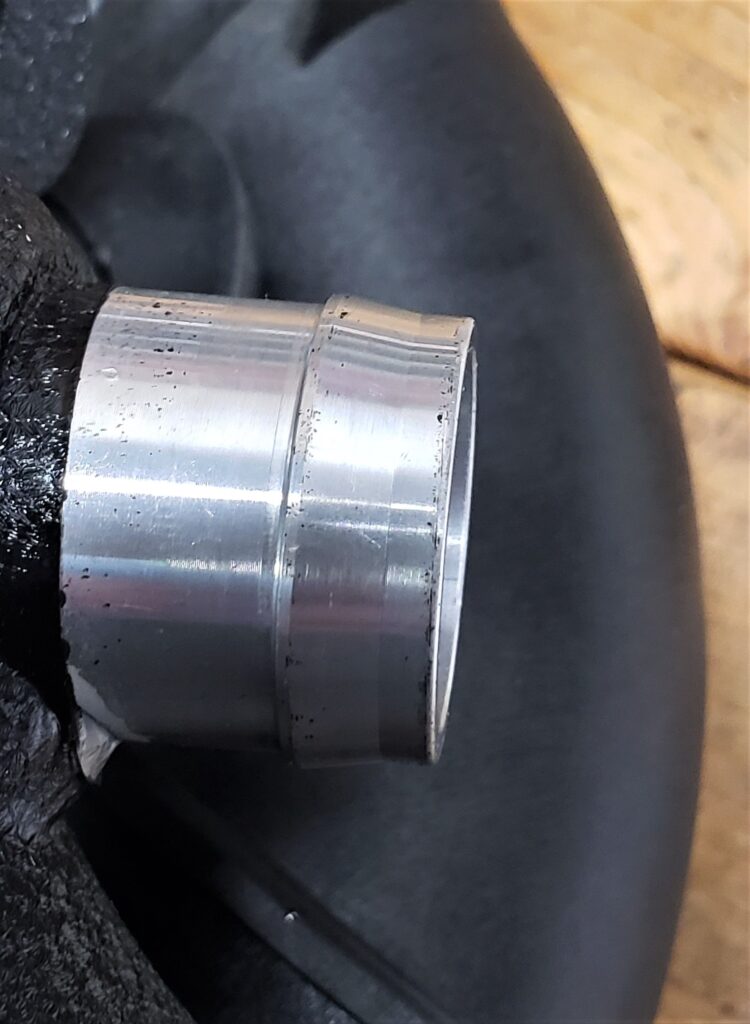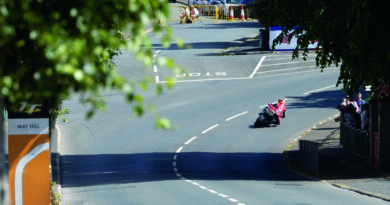The way it goes
I just finished installing an aftermarket turbo inlet pipe (TIP) in my car. The new part has a wider throat without the original’s lumpy obstruction where the positive crankcase ventilation (PCV) plumbing enters from one side. Improved flow yields decreased turbo lag, with more power arriving noticeably sooner. It’s not a huge difference, but plenty to justify the sub-$100 price of the part and the negligible labor required—two hose clamps, a single screw, and one weird German connector on the PCV pipe are all that’s involved. After reading the instructions and watching an installation video, it seemed to be an extremely quick and simple operation taking maybe a half-hour, tops.
 HAH!! That’s what a naïve newbie home mechanic would think! As I ventured into the garage, I told my wife I’d be done shortly. Then we had a good laugh; we both know those are famous last words. Indeed, I’m writing this over five hours later, having only barely accomplished the task with a last-minute modification. An hour ago, I was almost ready to give up on the whole thing. Two hose clamps, a single screw, and one weird German connector… Go ahead, Beemerphiles, guess which gave me trouble!
HAH!! That’s what a naïve newbie home mechanic would think! As I ventured into the garage, I told my wife I’d be done shortly. Then we had a good laugh; we both know those are famous last words. Indeed, I’m writing this over five hours later, having only barely accomplished the task with a last-minute modification. An hour ago, I was almost ready to give up on the whole thing. Two hose clamps, a single screw, and one weird German connector… Go ahead, Beemerphiles, guess which gave me trouble!
What I’m about to describe happened with an automotive project, but the exact same plotline has played out in countless motorcycle repairs and modifications; it’s like a tired sitcom formula. Such stories are universal whenever mechanical maneuverings are undertaken. Modern technology has transported us far from the early days of motoring, when it seems virtually every outing included some sort of breakdown demanding considerable knowledge and ingenuity on the owner’s part, but we’re still subject to a multitude of frustrations requiring similar resourcefulness when wrenching on our vehicles. Most of these appear utterly unnecessary, and they arrive totally unexpected by the neophyte. Experienced tinkerers, however, know such headaches are absolutely inevitable, even though their specifics are impossible to predict.
The hose clamps on the duct connecting the TIP to the airbox were promptly loosened, although one was positioned with its screw at an extremely awkward angle amidst a crowd of other components when it could have easily been installed with that fastener rotated to a readily accessible spot. The single mounting screw on the OEM TIP merely required a long extension on my socket wrench to reach its deeply buried location. So far, so good. The TIP/PCV pipe connection utilized something called a “constant pressure” fitting, which is essentially a shroud with a built-in plastic circlip that fits onto a smaller barbed tube. That tube (branching off the TIP) slips inside the circlip during installation, then its conical barb spreads the circlip open as insertion continues, and finally the circlip snaps closed behind barb’s trailing edge, locking the parts together.

There is no direct means of spreading the circlip to reverse this process, since it’s completely enclosed once assembly is complete. Separation of the two pieces can only be accomplished with a tremendous amount of force—enough to deform the circlip and drag it up and over the right-angle backside of the barb. Installation instructions recommend having an assistant hold one piece while you use all your might with both hands to yank the other piece free. This is the antithesis of good engineering in my humble opinion. I expect pieces to come apart and go together without forcing them, as long as I’m using the right tools for the job. Adding to my irritation, I learned my constant pressure connector was an “update” (implying someone deemed it an improvement); the previous design had employed a more traditional fitting with a pair of external tabs easily squeezed to release it from its perch.
Lacking an assistant, I set about trying to pry the fitting off the TIP with a variety of tools. A friend who’d performed this same operation had success popping his off with a large screwdriver blade, and I figured I’d do the same. He either used a magical screwdriver I didn’t possess or found purchase at an angle I couldn’t replicate; 30 minutes of struggle produced nothing but scarring around the fitting’s skirt. Did I mention this fitting is made of what seems to be brittle plastic, and breaking it would necessitate purchasing a $100+ replacement? (Of course, the offensive fitting is captured at the PCV pipe’s end and isn’t available separately.) Hence, while a great deal of pressure was clearly required, I had to balance that understanding with worries about disabling my car for however long it’d take to order and receive another PCV pipe assembly that cost more than the part I was installing.
During the next hour, I wrestled with an array of other prying tools, adding various blocks and braces to alter the leverage angle or magnify its ratio, all while stopping short of what I imagined would be truly destructive force—and all within the tight confines of an engine bay packed with fragile-looking hardware. Theoretically, I could have removed the other end of the PCV pipe and taken it to my workbench with the TIP still attached, giving myself much greater range of motion, or perhaps allowing the use of an assistant, the need for which I might ultimately have to admit. However, completely freeing the PCV pipe meant removing a host of additional parts, and my efforts to detach its other end (which I could already access) failed just as miserably as my attempts to liberate the TIP. Although the instructions said this other end would slip off the valve cover with the removal of one more screw, I couldn’t get it to budge at all using even more prying and grasping tools, and I feared breaking its delicate plastic housing if I worked it over any harder. This dead-end cost me another 30 minutes. Back to the first end (of the PCV pipe).


Whatever mysterious planetary alignment had been missing finally occurred and I heard an alarmingly loud click as the fitting wiggled off the TIP’s barbed tube. Had I broken it? No, it was intact. However, all that modulated violence I’d perpetrated against it had apparently torn an O-ring situated on a previously hidden stubby cylinder within the fitting that went inside the TIP’s inlet. The fitting actually sandwiched the TIP’s barbed tube with its shrouded circlip on the outside and this O-ring-equipped cylinder on the inside. OK, where was my box of spare O-rings? In recent months I’d moved it out of my way numerous times while grabbing other stuff, but now it successfully hid from me for another half-hour. It was late and I was growing desperate. I resigned myself to running out for another O-ring collection. I found an auto parts store that would be open just long enough for me to get there. Immediately upon exiting my neighborhood I encountered a dramatic accident scene, with traffic in both directions blocked by emergency vehicles. My circuitous escape route got me to the store two minutes before closing. This mundane errand became a stressful and convoluted quest, just like the rest of the project.
Back in my garage, I replaced the fitting’s O-ring. After easily sliding the new TIP into place on the turbo, I thought I was basically done. Now I could replace the mounting screw, put the airbox duct back with its two clamps, and pop on the PCV fitting, which was supposed to take no more than a nudge; that barbed tube would slip inside the circlip, spreading it briefly on its way to being preposterously secure. No. Such. Luck! After 45 more minutes of trying to force the fitting onto the new TIP with yet another set of tools and leverage aids, I concluded the circlip wasn’t spreading because the edge of the aftermarket TIP’s PCV inlet tube was too thick to fit within the circlip’s inner diameter. I consulted multiple internet forums to see if anyone else had encountered this problem, but came away with an unprecedented zero matches. I did, however, find posts from folks who’d had to grind down other aftermarket parts to make them fit. This emboldened me to vent my Dremel-equipped aggression on the overly thick aluminum edge of the new TIP’s tube, gradually beveling it more and more until it eventually found its way inside the circlip and delivered the deeply satisfying snap! I’d been seeking. At long last, the trivial remaining tasks could be performed, and the installation was complete.
The Ride Inside with Mark Barnes is brought to you by the MOA Foundation.
I’ve retold this saga in all its tedious detail because that’s the way it goes in actual practice—one inane little obstacle after another, gobbling up inordinate amounts of time and energy. We can become incensed about such absurdities, cursing the engineers who designed parts without regard for the mechanics who’ll have to work on them, or the assembly line technicians who failed to machine edges properly or position clamps conveniently, but this won’t advance our cause. We have to accept this is what it means to DIY, and then choose whether we’d rather endure the hassles of doing work ourselves or the hassles of taking our vehicle to a shop. Either option can end up being much more expensive than the other, but often we can’t know in advance which will prove costlier in terms of time and/or money.
Just like those adventurous souls who set out across town or across the country on primitive machines of yore, home mechanics must be prepared for hurdles to arise without warning—repeatedly. This preparation includes having many good tools on hand, along with some conceptual knowledge and practical experience. Most of all, it requires an attitude of openness and curiosity, with the ability and determination to treat each unanticipated frustration as an interesting puzzle to solve and an opportunity to learn. Otherwise, we’re doomed to relentless suffering most any time we reach for our wrenches.
Appearances be damned; the quick and simple mechanical project is as mythical as a unicorn.
Mark Barnes is a clinical psychologist and motojournalist. To read more of his writings, check out his book Why We Ride: A Psychologist Explains the Motorcyclist’s Mind and the Love Affair Between Rider, Bike and Road, currently available in paperback through Amazon and other retailers.




